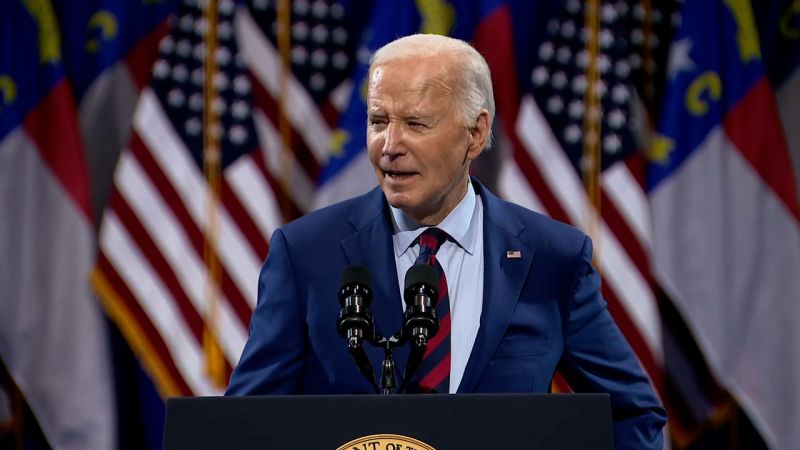President Joe Biden announced Thursday $3 billion toward identifying and replacing the nation’s unsafe lead pipes, a long-sought move to improve public health and clean drinking water that will be paid for by the Bipartisan Infrastructure Law.
Biden unveiled the new funding in North Carolina, a battleground state Democrats have lost to Donald Trump in the past two presidential elections but are feeling more bullish toward due to an abortion measure on the state’s ballot this November.
…
The Environmental Protection Agency will invest $3 billion in the lead pipe effort annually through 2026, Administrator Michael Regan told reporters. He said that nearly 50% of the funding will go to disadvantaged communities – and a fact sheet from the Biden administration noted that “lead exposure disproportionately affects communities of color and low-income families.”



So, that’s not actually corruption or diversion of funds for this problem, that’s basically what you have to do.
A lot of pipes we know are lead, but even more are unknown because they were installed long enough ago that we’re just operating under the assumption that they’re either lead, old style clay, or wood.
It’s entirely expected that cities will say “there’s a water main under this road from 1901, so we’re ripping it up and replacing the pipe and road”, because that 1901 is entirely sufficient to say that pipe is shit.
You fight lead pipes by replacing all the old pipes, not by trying to selectively only get the lead ones.
I am not sure if you’ve seen the process through which public funding gets funneled through private companies to implement.
The decision to delegate the task to break one job apart for portions of the same job is a thing. My hometown had separate teams building a highway: one westbound one eastbound. They build things in the wrong place.
https://archive.kitsapsun.com/news/local/890000-mistake-discovered-on-highway-16-project-ep-419650199-357597121.html
I am aware of the process. I’m not sure what that has to do with “sometimes a big project takes a lot of work, and other things also have to happen to do it”.
A lot of projects get a lot bigger and become a lot more work without doing much or other things.
Like a local decision to build a new police station, including shooting range requiring land clearing, versus utilizing that funding for the addressing the homeless population. It wasn’t what the money was originally for, but it got moved around legally enough.
I read your article and it pretty clearly says that the problem was with the State DOT Planners and Engineers, not the construction teams.
The problem in this case wasn’t with the people building the road it was with the people who planned it. AKA The Government.
Well, yes. The planners and engineers are the ones subject to all the political hands of local governments.
Certainly not implicating the construction teams themselves. (Though arguably still if one firm were building both sides they may have noticed sooner.)
Now I admit I say this from both personal experience and a tinge of disgruntlement. But my remarks regard government serving private interests over public ones, not government itself. The system that these planners operate under is one rife with regulatory capture.
Point is: there’s going to be significant administrative bleed at best.
If that’s really how that works, then I can see why the expense has been kicked down the line so long. I worry this allocated money won’t be enough then and that we’re probably talking “show” money vs “getting things done” money.
It’s complicated how it’s funded, but this isn’t the first or last time we’ve allocated funds for this.
https://www.epa.gov/dwsrf
https://www.epa.gov/water-infrastructure/bipartisan-infrastructure-law-srf-funding-status
Basically, in 1996 we setup a program to make it easier for states to get federal money for water improvements, either via long term loans or grants.
The EPA then doles out the money, and it trickles back over time from loan repayments. That’s why with $21 billion in funding they’ve provided $41 billion in investments.
Periodically Congress adds some more money to the fund, but it’s largely the feds turning the massive one time costs of these projects into reasonable long term investments.
The Bipartisan Infrastructure Law dumped something like $50 billion into that fund, which is a lot more than it usually has, and $15 billion of which is allocated to lead pipes replacement.
After a round of assessments of pipes and applications from different water providers, the EPA put together a $3 billion package of the most high priority projects that can get started this year.
Then Biden signed the order to issue the round of funding according to EPA recommendations.
This is more like the first big paycheck after getting a new job than winning the lottery.